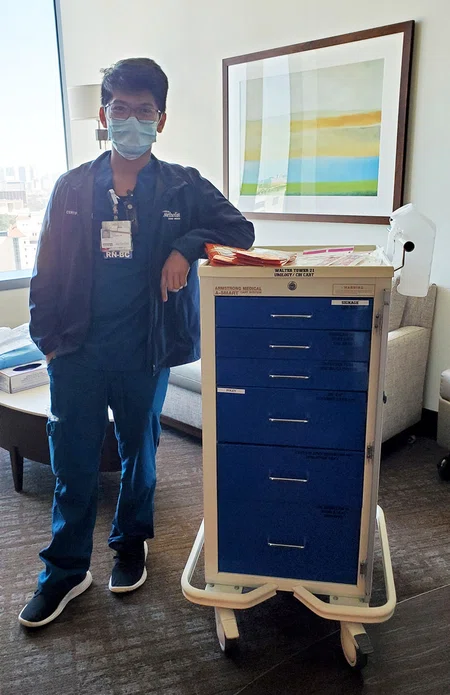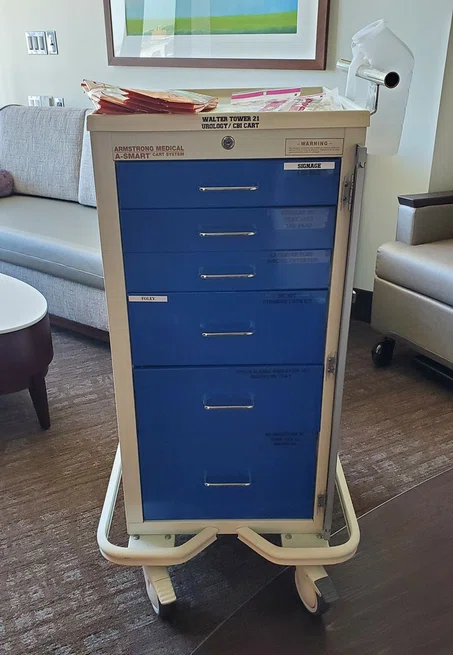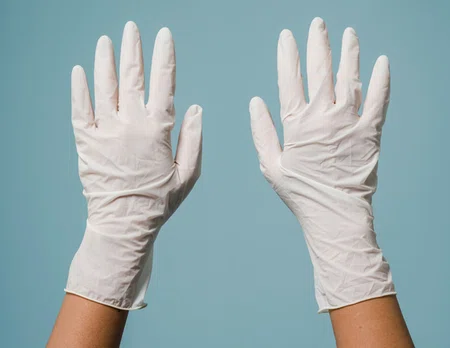Contact us at CNREPHelp@houstonmethodist.org
Questions or comments?
© 2021. Houston Methodist, Houston, TX. All rights reserved.


Professional Development
Preventing CAUTIs & CLABSIs: Putting Evidence into Practice
4 MIN READ


You hear it almost daily: We Must Prevent CAUTIs and CLABSIs. Catheter-Associated Urinary Tract Infections (CAUTIs) and Central Line-Associated Blood Stream Infections (CLABSIs) are two of the most common yet preventable hospital complications, according to the Centers for Medicare and Medicaid (CMS).1 Since nurses are the healthcare providers who spend the most time with patients, much of the responsibility to prevent these infections falls on us.
Using evidence-based practice to guide them, nurses on two different inpatient nursing units decided to create carts to help their peers prevent CAUTIs and CLABSIs. The Center for Disease Control and Prevention (CDC)2 and The Joint Commission (TJC)3 recommend bundling supplies when caring for central lines. The same principles are useful for urinary catheter care as well.4 Putting all needed supplies into carts that can be rolled to patient rooms helps nurses have everything they need to clean and maintain central lines and urinary catheters.
In 2019, Katie Reed, BSN, RN, OCN from Walter Tower 14 Hematology & Oncology led an initiative to address the rising CLABSI rates on the unit. For the oncology patient population, a bloodstream infection can be deadly, so Katie and her team knew they must take action to prevent these infections. They created a cart that had all the needed supplies for central line dressing changes and accessing port-a-caths. The cart's top also produced a clean work surface that helped them gather and organize all the required supplies.


Initially, the staff was slow to adopt the CLABSI cart, but most of the nurses on Walter Tower 14 were using the cart within a few months. Because of the unit adopting this cart, Walter Tower 14 went over 365 days without having a single CLABSI. While recently they have had a few new CLABSIs, they expect their rates to return to zero through re-education.
John Dimaano, BSN, RN-BC, from Walter Tower 21, led a similar initiative on his unit. In 2019, the unit leadership noticed an increase in CAUTIs. John, who was recently promoted to RN III, wanted to take on a CAUTI prevention initiative for his promotion.
John created a CAUTI Prevention Bundle tool, consisting of laminated signage for the patient's door, instructions about CHORUS guidelines5, and signs to encourage patients to ask their nurses, "Why do I need a Foley?" The ultimate goal is to avoid using a urinary catheter, but staff can use the urology cart that John created when one needs to be inserted. The cart is stocked with all the supplies required for insertions of urinary catheters and completing bladder irrigation. The cart enables staff to insert and care for urinary catheters without making several trips to the supply room.


Since creating the CAUTI Prevention bundle and urology cart, Walter Tower 21 has gone over a year without CAUTIs. The Walter Tower 21 nurses enjoy using their cart and engaging patients in their urinary catheters' care.
Creating a CAUTI or CLABSI cart is an excellent way to bundle supplies, decrease trips to the supply room when providing nursing care, and reduce CAUTI and CLABSI rates on your unit. Talk to your unit leadership about how to implement this innovative idea in your unit.
References:
- Centers for Medicare and Medicaid. (2020, Feb. 11). Hospital-Acquired Conditions. CMS.gov. Retrieved on March 9, 2021 from Hospital-Acquired Conditions | CMS.
- Centers for Disease Control and Prevention. (2017, July). Guidelines for the prevention of intravascular catheter-related infections. Infection Control. Retrieved on March 9, 2021 from BSI | Guidelines Library | Infection Control | CDC.
- The Joint Commission. (2021). Central line-associated blood stream infections toolkit and monograph. The Joint Commission.org. Retrieved on March 9, 2021 from Central Line Associated Bloodstream Infections Toolkit and Monograph | The Joint Commission.
- Ceballos, K., Waterman, K., Hulett, T., & Makic, M. B. F. (2013). Nurse-driven quality improvement interventions to reduce hospital-acquired infection in the NICU. Advances in Neonatal Care (Lippincott Williams & Wilkins), 13(3), 154–165. https://doi.org/10.1097/anc.0b013e318285fe70
- Centers for Disease Control and Prevention. (2017, Feb.). Guidelines for Prevention of Catheter-Associated Urinary Tract Infections. Infection Control. Retrieved on March 9, 2021 from Updates | CAUTI Guidelines | Guidelines Library | Infection Control | CDC.










